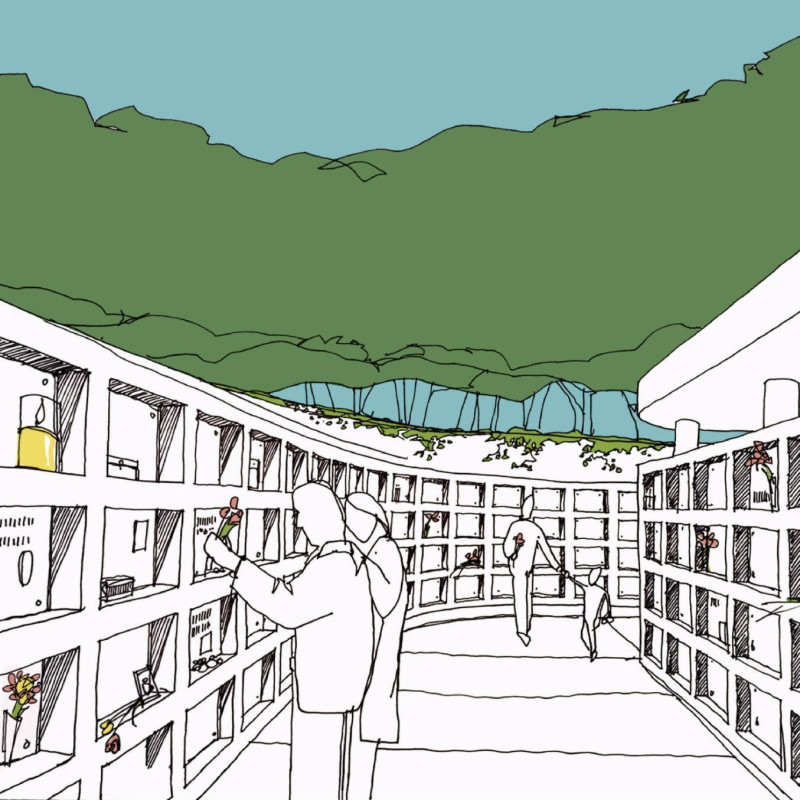5 key facts about this project
The Columbarium cum Limen offers a reflective space designed for both the living and the deceased. Located in a gently sloped meadow, it serves as a repository for the remains of the departed while also providing a place for people to commemorate and pay tribute. The overall design aims to create a meaningful connection between life and death, inviting visitors to contemplate their place in this cycle.
Form and Context
The building presents itself as a landscape feature, echoing traditional burial mounds. Visitors make their way along a path through the forest, leading to a structure that gradually becomes visible. This integration into the surrounding landscape emphasizes the building's relationship with its environment. The form encourages a sense of belonging and reflection, allowing nature and structure to coexist.
Spatial Organization
Inside, textured concrete walls define the space and provide a sense of enclosure. These walls surround niches that accommodate the remains of deceased individuals, lined with smooth dolomite stone slabs. Each niche can hold several urns, reflecting family connections while allowing for individual memorials. The careful arrangement fosters a community atmosphere while honoring personal remembrance.
Light and Atmosphere
A shallow pyramidal roof appears to float above the pavilion, held up by slender concrete columns. This design choice allows natural light to fill the interior, enhancing the atmosphere. A large oculus in the roof functions as a primary source of daylight, connecting the inside of the building to the elements outside. Visitors experience changing light throughout the day, enriching their time spent in the space.
Memorial Elements
The pavilion floor features a black granite disk inscribed with poems. This provides focal points for contemplation, inviting visitors to pause and reflect. Rows of stone benches offer seating for gatherings, creating a calm area for memorials. Each niche is identified by engraved stones or inscribed metal covers, fostering personal connections for visitors. The design encourages a sense of community and shared memory, making it a meaningful place for reflection and tribute.






















































